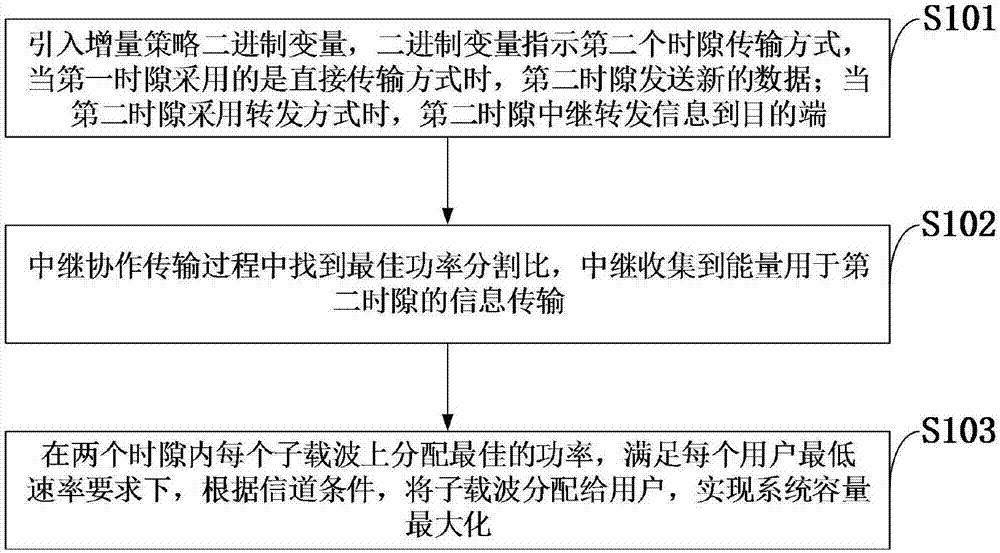Energy acquisition cooperative network resource distribution method based on information and energy transmission
A technology of resource allocation and energy collection, applied in the directions of location diversity, wireless communication, and energy consumption reduction, which can solve the problems of halving the spectral efficiency, the inability to guarantee fairness between users, and the inability to effectively utilize multiple input and multiple output. , to achieve the effect of improving spectrum utilization
- Summary
- Abstract
- Description
- Claims
- Application Information
AI Technical Summary
Problems solved by technology
Method used
Image
Examples
Embodiment Construction
[0039] In order to make the objectives, technical solutions and advantages of the present invention clearer, the present invention will be further described in detail below with reference to the embodiments. It should be understood that the specific embodiments described herein are only used to explain the present invention, but not to limit the present invention.
[0040] The application principle of the present invention will be described in detail below with reference to the accompanying drawings.
[0041] S101: Introduce an incremental strategy binary variable, the binary variable indicates the second time slot transmission mode, when the first time slot adopts the direct transmission mode, the second time slot sends new data; when the second time slot adopts the forwarding mode When the second time slot relays and forwards the information to the destination end;
[0042] S102: Find the best power division ratio in the relay cooperative transmission process, and the relay...
PUM
 Login to View More
Login to View More Abstract
Description
Claims
Application Information
 Login to View More
Login to View More - R&D
- Intellectual Property
- Life Sciences
- Materials
- Tech Scout
- Unparalleled Data Quality
- Higher Quality Content
- 60% Fewer Hallucinations
Browse by: Latest US Patents, China's latest patents, Technical Efficacy Thesaurus, Application Domain, Technology Topic, Popular Technical Reports.
© 2025 PatSnap. All rights reserved.Legal|Privacy policy|Modern Slavery Act Transparency Statement|Sitemap|About US| Contact US: help@patsnap.com



